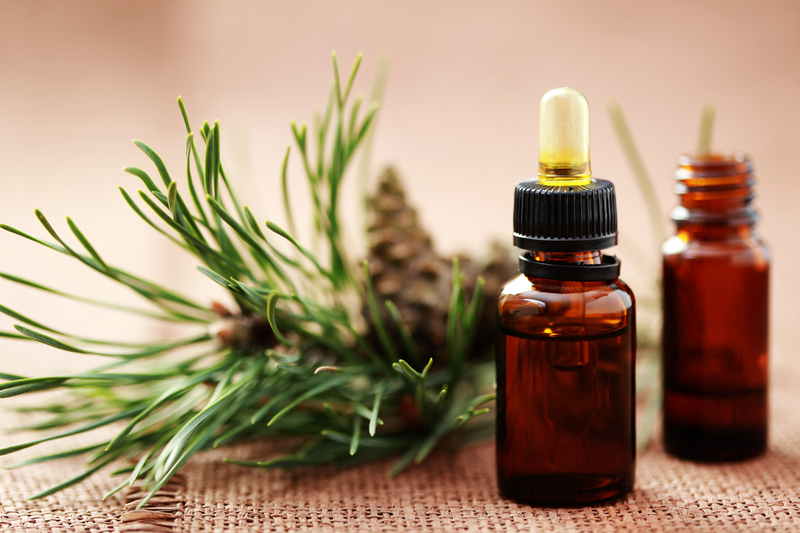Uncover the Best Ways to Remove Stubborn Stovetop Burn Marks
Posted on 14/08/2025
Uncover the Best Ways to Remove Stubborn Stovetop Burn Marks
If you love to cook, you're probably all too familiar with the annoyance of stubborn stovetop burn marks. Whether you've experienced a boiling pot overflowing, or a pan sizzling over high heat, burn marks can make even the cleanest kitchen look untidy. Removing tough burn stains from your stovetop doesn't have to be a nightmare. This comprehensive guide will help you uncover the best ways to remove stubborn stovetop burn marks quickly and safely, restoring your kitchen's sparkling appearance.

Understanding Stovetop Burn Marks: Causes and Challenges
Before diving into cleaning techniques for burn marks, it's essential to understand why they occur. Stovetop burn marks happen when food, grease, or other debris is heated excessively, leaving behind tough, blackened, or brownish spots. The types of stovetops--gas, electric coil, or glass-ceramic--also influence how burn stains form and how easily they can be removed.
Common Causes of Stovetop Burn Marks
- Spilled food or sauces that are left uncleaned and get repeatedly heated.
- Boil-overs from pasta, rice, or milk.
- Grease splatters that don't get wiped away promptly.
- High-heat cooking, which can carbonize food residue instantly.
Understanding these causes can help you prevent marks in the future. But what do you do with stubborn stovetop burn marks that won't budge? Let's dig into the best solutions below.
Preparing to Clean: What You Need Before Removing Burn Marks
Before jumping into stovetop stain removal methods, it's vital to gather the right supplies. Using the wrong tools or chemicals can damage your stovetop's surface, especially if it's glass or ceramic. Here's what you'll need for most cleaning methods:
- Soft cleaning cloths or sponges
- Non-abrasive scrub pads
- Baking soda
- White vinegar
- Dish soap
- Razor blade scraper (only for glass and ceramic tops, used very carefully)
- Commercial stove cleaners (optional, for particularly tough marks)
- Protective gloves (especially when using strong chemicals)
Before cleaning, always ensure your stove is turned off and cool to the touch. Removing stubborn stovetop burn marks efficiently is all about choosing the right method for your surface.
How to Remove Burn Marks from Different Types of Stovetops
Not all stovetops are created equally. Techniques for removing burn stains will vary depending on your specific model. Here's how to tackle the most common types:
1. Gas Stovetops
- Remove grates and burner caps: Wash them in warm, soapy water. For tough stains, soak in a mixture of water and baking soda, then scrub gently.
- Stubborn burn marks on the stovetop:
- Sprinkle a generous amount of baking soda onto the affected areas.
- Spray with white vinegar to create fizzing action, which helps loosen burnt residue.
- Let it sit for 15-20 minutes before scrubbing with a non-abrasive pad.
- Wipe clean with a damp cloth and repeat if necessary.
2. Electric Coil Stovetops
- Remove coils: Unplug or ensure coils are completely cool before removing.
- Clean burner pans: Soak pans in hot, soapy water. Use baking soda paste (a mixture of baking soda and water) for persistent burn marks.
- Clean the stove surface: Use a gentle cleanser and soft sponge, focusing on burned spots. Avoid harsh abrasives.
3. Glass or Ceramic Cooktops
- Use a specialized cooktop cleaner: Many brands formulate creams or sprays for glass surfaces.
- For stubborn burnt-on stains:
- Sprinkle baking soda directly on the mark.
- Spray or pour a small amount of vinegar over it, letting it fizz.
- Cover with a damp microfiber cloth and let sit 15-30 minutes.
- Gently scrub with a non-abrasive pad.
- For extra-stubborn marks, use a razor blade scraper at a 45-degree angle, taking care not to gouge the surface. Only use this technique if permitted by your stove's manufacturer guidelines.
- Finish by polishing the surface with a dry cloth for shine.
DIY Natural Solutions for Removing Stovetop Burn Marks
If you prefer chemical-free cleaning, there are several natural remedies that work surprisingly well for burn marks on stovetops. Here are the most effective DIY solutions:
1. Baking Soda and Vinegar
This classic duo cuts through stubborn stains and burnt-on gunk. Here's how:
- Step 1: Make a paste using 3 parts baking soda and 1 part warm water.
- Step 2: Apply the paste over the burn mark, pressing gently.
- Step 3: Spray vinegar on top. Let it bubble for a few moments.
- Step 4: After 15 minutes, scrub gently with a non-abrasive pad.
- Step 5: Wipe with a damp cloth for a clean finish.
2. Lemon and Baking Soda
Lemon is a natural degreaser and deodorizer. Use it with baking soda for persistent stains:
- Sprinkle baking soda over the burn mark.
- Slice a lemon in half and use the cut side to scrub the area.
- Rinse with a damp cloth to remove residue.
3. Hydrogen Peroxide and Baking Soda
For marks that just won't lift, hydrogen peroxide offers a little extra cleaning power:
- Mix hydrogen peroxide with baking soda to form a thick paste.
- Spread onto the stain and cover with cling film (to retain moisture).
- Let sit at least 30 minutes or overnight for best results.
- Remove film, scrub gently, and wipe clean.
When to Use Commercial Stovetop Cleaners
For very persistent burn stains on your stove, commercial products can help. Many are specially formulated for glass and ceramic or for greasy, baked-on messes. Always follow the manufacturer's instructions and test in a small area first.
Highly-Recommended Commercial Cleaners:
- Bar Keeper's Friend Cooktop Cleaner
- Weiman Cooktop Cleaner and Polish
- Affresh Cooktop Cleaning Kit
- Cerama Bryte Cleaner
Apply with the recommended tool (usually a soft pad or sponge), let sit, then buff out with a dry, clean cloth. Never use steel wool or harsh abrasives, which can scratch the surface irreparably.
Top Tips for Preventing Stubborn Stovetop Burn Marks
Removing stubborn stove stains is great, but prevention is even better. Here's how you can keep your stovetop looking like new:
- Wipe spills immediately: The quicker you address spills--even minor ones--the less likely they'll burn onto the surface.
- Avoid using dirty or greasy pans: Excess oil will splatter and leave marks when overheated.
- Deep clean weekly: Even if stains aren't visible, aromatic residues can accumulate and cause discolored spots.
- Use drip pans or liners where applicable: These catch overflow before it hits the surface and can be easily cleaned or replaced.
- Monitor cooking temperatures: Don't leave pots or pans unattended on high heat to prevent boil-overs and scorching.

Frequently Asked Questions About Removing Stove Burn Marks
Can I use a magic eraser on my glass cooktop?
Magic erasers are generally safe for glass cooktops, but use them with caution! They act as a mild abrasive. Always test in a small, inconspicuous area first to ensure they don't scratch.
Is it safe to use a razor blade on my stovetop?
On glass and ceramic cooktops, a razor blade scraper can safely remove stubborn burn marks when used at a low angle and with minimal pressure. Never use this method on metal or enamel stovetops, and always consult your manufacturer's instructions first.
What should I avoid when cleaning stovetop burn marks?
- Never use steel wool, as this can scratch most surfaces.
- Avoid chlorine bleach, which can damage some finishes.
- Stay away from oven cleaner sprays unless specifically labeled for cooktop use.
How often should I clean my stovetop to prevent burn marks?
Wipe down your stovetop after every use, and deep-clean once a week to prevent stubborn stain buildup.
Summary: The Best Ways to Remove Stubborn Stovetop Burn Marks
- Choose the right method for your stovetop type (gas, electric, glass/ceramic).
- Use natural solutions like baking soda, vinegar, lemon, or hydrogen peroxide for most stains.
- Rely on commercial cleaners for extremely tough, set-in burn marks.
- Prevent problems by adopting good cooking and cleaning habits.
With the best cleaning techniques for stubborn stovetop burn marks at your disposal, you can enjoy a sparkling stove that always looks its best. Regular maintenance, immediate attention to spills, and specialty cleaning products when needed will keep your kitchen surface shining for years to come!
If you found this guide valuable, share it with friends and bookmark it for future reference. A spotless kitchen starts with a pristine stovetop!




